Fitness landscape of substrate-adaptive mutations in evolved amino acid-polyamine-organocation transporters
- PMID: 38916596
- PMCID: PMC11198987
- DOI: 10.7554/eLife.93971
Fitness landscape of substrate-adaptive mutations in evolved amino acid-polyamine-organocation transporters
Abstract
The emergence of new protein functions is crucial for the evolution of organisms. This process has been extensively researched for soluble enzymes, but it is largely unexplored for membrane transporters, even though the ability to acquire new nutrients from a changing environment requires evolvability of transport functions. Here, we demonstrate the importance of environmental pressure in obtaining a new activity or altering a promiscuous activity in members of the amino acid-polyamine-organocation (APC)-type yeast amino acid transporters family. We identify APC members that have broader substrate spectra than previously described. Using in vivo experimental evolution, we evolve two of these transporter genes, AGP1 and PUT4, toward new substrate specificities. Single mutations on these transporters are found to be sufficient for expanding the substrate range of the proteins, while retaining the capacity to transport all original substrates. Nonetheless, each adaptive mutation comes with a distinct effect on the fitness for each of the original substrates, illustrating a trade-off between the ancestral and evolved functions. Collectively, our findings reveal how substrate-adaptive mutations in membrane transporters contribute to fitness and provide insights into how organisms can use transporter evolution to explore new ecological niches.
Keywords: S. cerevisiae; adaptive mutations; amino acid transport; amino acid-polyamine-organocation transport family; biochemistry; chemical biology; evolutionary biology; experimental evolution; yeast.
© 2024, Karapanagioti et al.
Conflict of interest statement
FK, ÚA, DS, BP, SO No competing interests declared
Figures



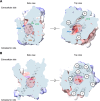
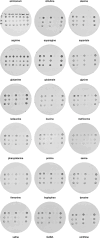
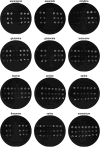
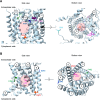

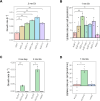



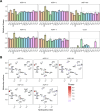


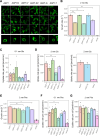
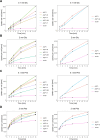



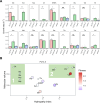
Update of
- doi: 10.1101/2023.10.12.562049
- doi: 10.7554/eLife.93971.1
- doi: 10.7554/eLife.93971.2
Similar articles
-
The Saccharomyces cerevisiae amino acid transporter Lyp1 has a broad substrate spectrum.FEBS Lett. 2025 Jun;599(11):1609-1621. doi: 10.1002/1873-3468.70044. Epub 2025 Apr 18. FEBS Lett. 2025. PMID: 40247776 Free PMC article.
-
Modelling and mutational evidence identify the substrate binding site and functional elements in APC amino acid transporters.Mol Membr Biol. 2009 Aug;26(5):356-70. doi: 10.1080/09687680903170546. Epub 2009 Aug 7. Mol Membr Biol. 2009. PMID: 19670073
-
Resculpting the binding pocket of APC superfamily LeuT-fold amino acid transporters.Cell Mol Life Sci. 2018 Mar;75(5):921-938. doi: 10.1007/s00018-017-2677-8. Epub 2017 Oct 23. Cell Mol Life Sci. 2018. PMID: 29058016 Free PMC article.
-
Regulation of Amino Acid Transport in Saccharomyces cerevisiae.Microbiol Mol Biol Rev. 2019 Oct 16;83(4):e00024-19. doi: 10.1128/MMBR.00024-19. Print 2019 Nov 20. Microbiol Mol Biol Rev. 2019. PMID: 31619504 Free PMC article. Review.
-
Function and Regulation of Fungal Amino Acid Transporters: Insights from Predicted Structure.Adv Exp Med Biol. 2016;892:69-106. doi: 10.1007/978-3-319-25304-6_4. Adv Exp Med Biol. 2016. PMID: 26721271 Review.
Cited by
-
The Evolution of ABC Importers.J Mol Biol. 2025 Jun 1;437(11):169082. doi: 10.1016/j.jmb.2025.169082. Epub 2025 Mar 13. J Mol Biol. 2025. PMID: 40089147 Review.
-
The Saccharomyces cerevisiae amino acid transporter Lyp1 has a broad substrate spectrum.FEBS Lett. 2025 Jun;599(11):1609-1621. doi: 10.1002/1873-3468.70044. Epub 2025 Apr 18. FEBS Lett. 2025. PMID: 40247776 Free PMC article.
References
MeSH terms
Substances
Grants and funding
LinkOut - more resources
Full Text Sources
Miscellaneous

